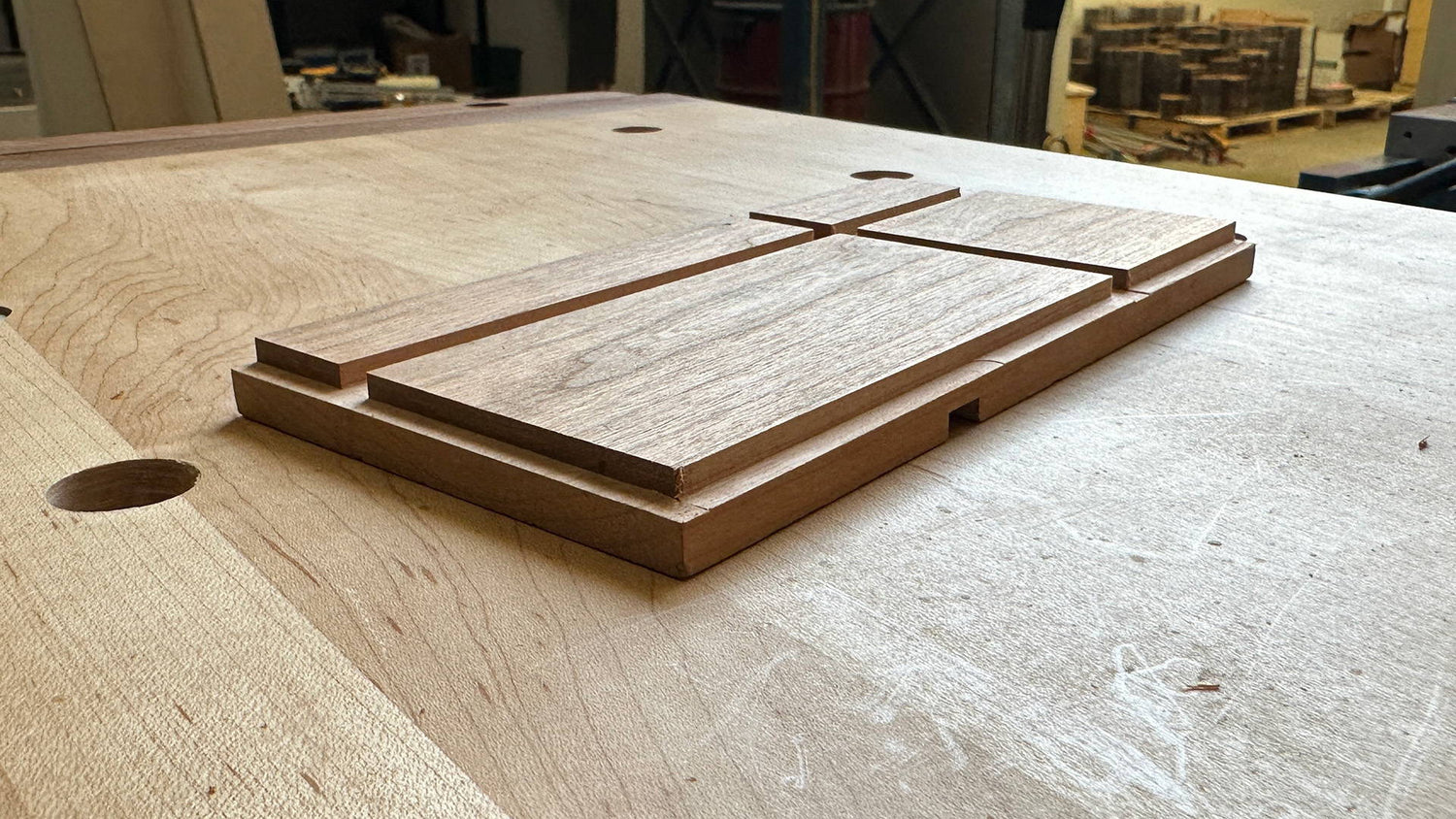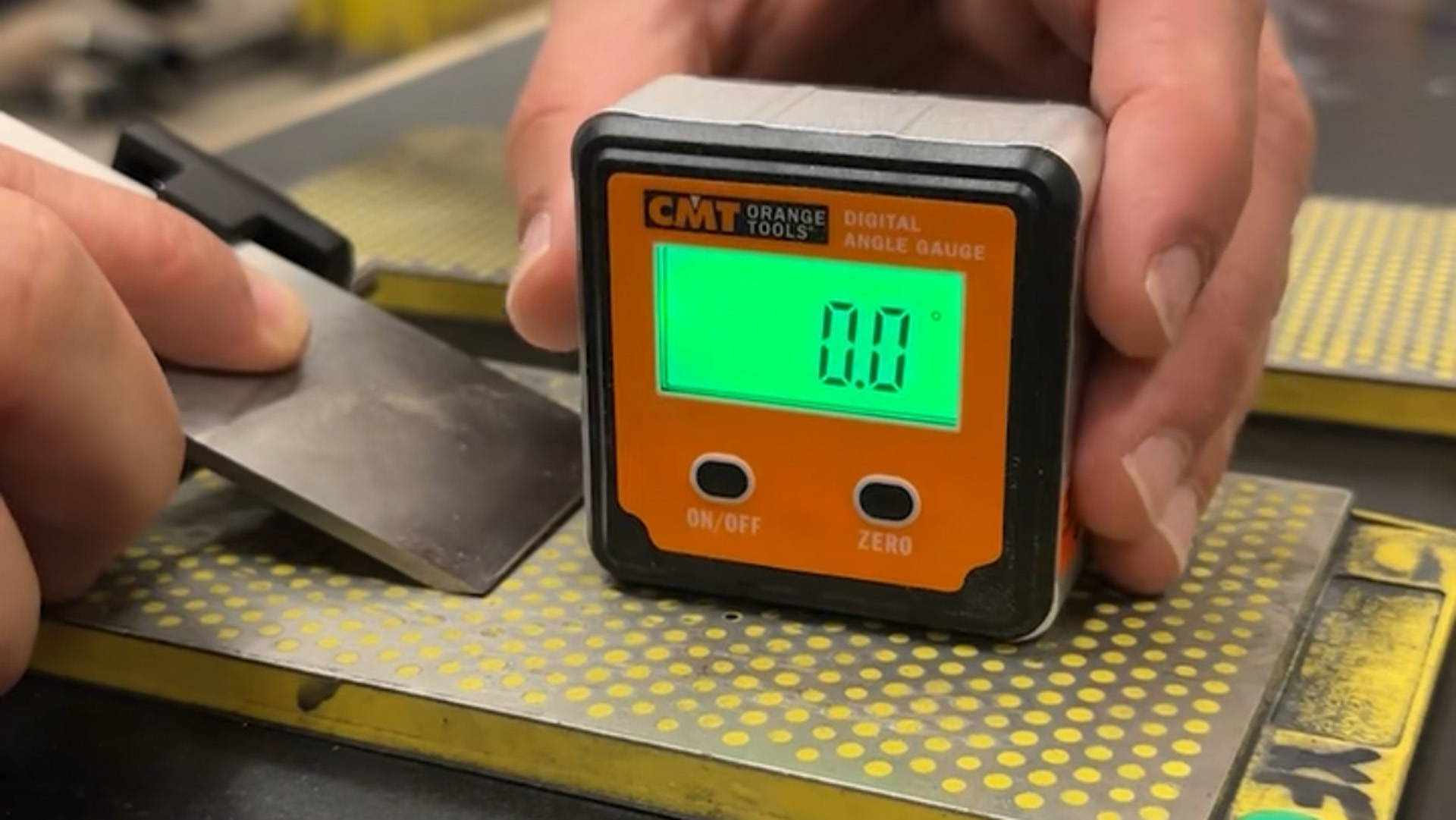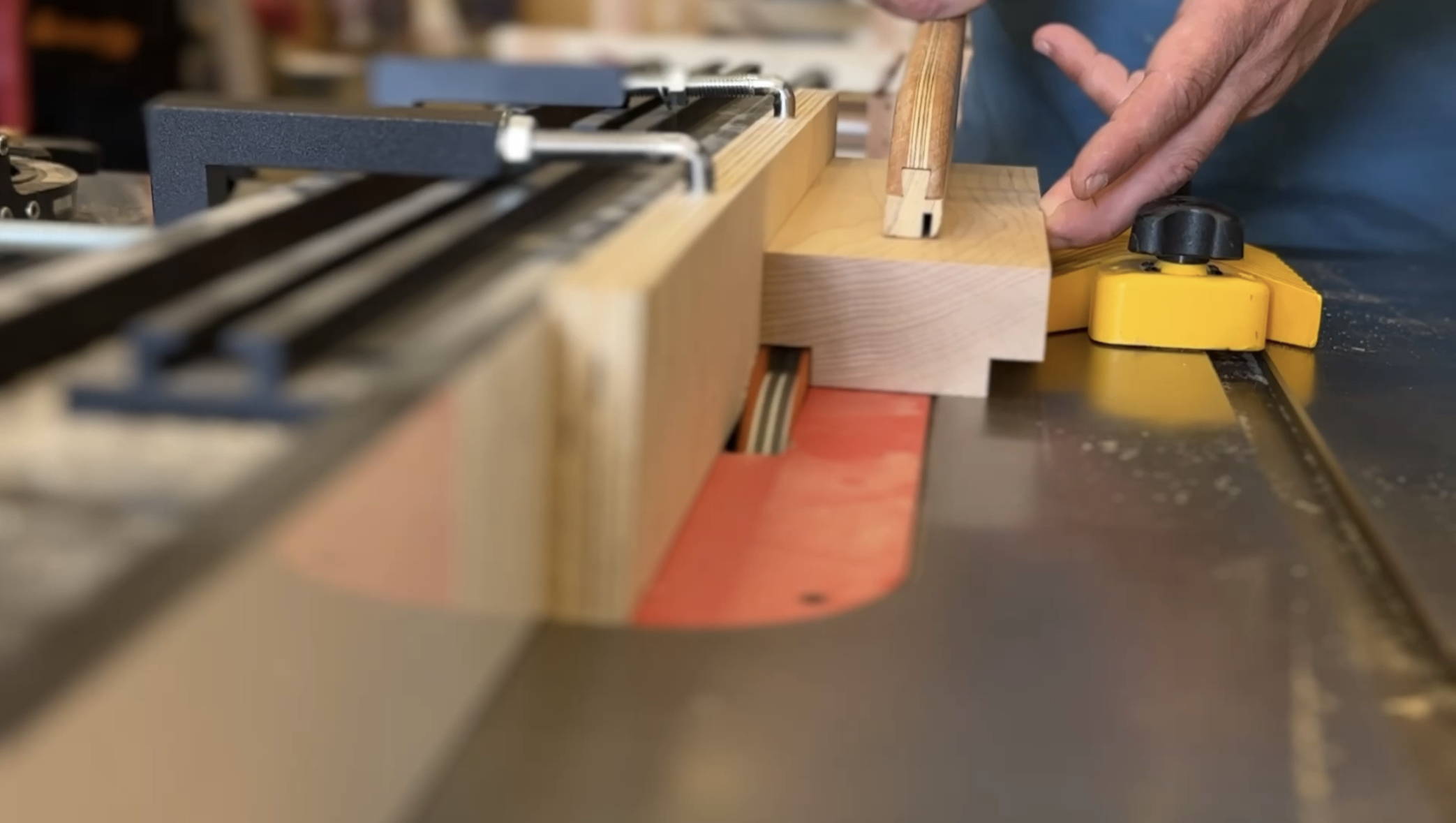Grooves, dados, and rabbets are a joinery style every woodworker needs to know.
They’re the quickest and simplest joint for building boxes and cabinets (aside from the forsaken butt joint)...
And almost regardless of the tools you own, there’s a way for you to cut them.
Today, I’m explaining how to cut grooves, dados, and rabbets with 7 different tools — from the specialized to the ridiculously basic.
Even if you have every tool on earth, knowing these different techniques can save you in a pinch. Because the best woodworker is a well-rounded one.
Let’s get to it.
TABLE OF CONTENTS
WHAT’S THE DIFFERENCE BETWEEN A GROOVE, DADO, AND RABBET?
A common source of confusion is the difference between a groove vs dado vs rabbet joint.
It’s actually simple — and has to do with the cut’s placement in relation to a board’s grain direction.
Grooves are channels cut with (or parallel) to a board’s grain.
Dados are channels cut across (or perpendicular) to a board’s grain.
Both are enclosed on three sides, with two shoulders (side walls) and a bottom.
Rabbets can run with or across the grain, but they’re always on the edge of a board. That means they’re only enclosed on two sides — with one shoulder and a bottom.
Because grooves and dados have two shoulders, they fully enclose connecting boards and are a lot stronger than rabbets.
That’s why rabbets often need to be strengthened with fasteners.
Stopped grooves, dados, and rabbets are simply where the channel isn’t cut all the way across a board but stops before an edge.
WHAT ARE GROOVE, DADO, AND RABBET JOINTS USED FOR?
The most common use for grooves, dados, and rabbets is in box and cabinet making.
Rabbets make it easier to align boards square at their edges, and all three of these joint styles help prevent racking (where a piece of furniture leans to the side).
Grooves and dados are also great for holding shelves in place (like in the router bit cabinet pictured above) and stopped versions can be used to hide the actual joint.
Here’s a couple other places I use these joints:
-
Dovetails: When making dovetails, I almost always cut a rabbet on the back of my tails. It helps with alignment and keeps the inside of the joint looking impeccable (read more dovetail tips here).
- T-track in shop jigs: T-track adds a ton of functionality to shop jigs, letting you attach hold-down clamps, knobs, and stop blocks. On my multi-sled build, I used multiple grooves and dados.
HOW TO CUT GROOVES, DADOS, AND RABBETS WITH DIFFERENT TOOLS
No matter the tools you have, you’ll find a method below for cutting grooves, dados, and rabbets.
Some are faster and more accurate than others — but they’re all good to know.
1. REGULAR TABLE SAW BLADE
This isn’t the quickest way to cut grooves, dados, and rabbets — but it works well if you don’t own a dado stack.
It’s best to use a blade with Flat Top Grind (FTG) teeth, like many ripping blades. These teeth will leave a flat, smooth bottom instead of a bunch of valleys (read more about saw blades here).
The idea is to first cut both shoulders of the joint, then clear the waste in the middle with multiple cuts.
Use a marking knife to mark one side of the groove on the edge of your board. Line this up with the table saw blade’s teeth — making sure the kerf will be on the waste side.
Make the cut with either a crosscut sled or your table saw’s rip fence.
There’s a couple ways to set up the cut for the second shoulder. You could just measure, or use the mating piece to layout another marking knife line.
A great way to do it is with a spacer equal to the kerf of the blade. It leads to a perfectly sized cut — and you can read more about it here.
Once the shoulders are cut, make multiple cuts to remove the waste in the middle. You can smooth out the bottom with sandpaper, a chisel, or a router plane.
2. DADO BLADE SET
A dado blade is by FAR my favorite way to cut grooves, dados, and rabbets.
It’s quick, accurate, and you can cut your channels to just about any size.
First off, you need a good dado blade set. We have several options in our store, but this locking dado from CMT has quickly become my favorite.
Use the chippers and spacers to get the dado stack to the appropriate thickness. Then make the cuts with either a one-sided crosscut sled or using the table saw fence.
If you plan to cut rabbets using your table saw fence, you need to add a sacrificial fence.
This can be as simple as a piece of plywood, and it protects your blade and actual fence from damage.
Here’s how to make a quick sacrificial fence using the adjustable fence clamps available in our store.
3. HANDHELD ROUTER
Handheld routers are a great option for cutting grooves, dados, and rabbets in panels that are too big for your router table.
Rabbeting bits with a bearing makes quick work of it. We have a rabbeting bit set with interchangeable bearings to cut multiple sizes of rabbets all with one bit.
Edge guides also work well for rabbets or grooves/dados relatively close to the board’s edge. With rabbets, however, be careful of the router tilting.
If you need to cut a groove or dado farther from a board’s edge than your edge guide will reach, here’s how to build a simple groove/dado jig.
I recommend using either a compression bit or downcut bit for these grooves and dados. The flute design of either helps reduce tearout and cut cleaner top edges along the shoulders.
4. ROUTER TABLE
After a dado blade, the router table is my preferred tool for cutting grooves, dados, and rabbets.
They involve less set up than handheld routers — and there’s less risk of cutting too deep.
The limitation is the size of boards you can safely balance on the router table top.
A router table fence is critical for safely cutting grooves and dados — and gives you the option to add a stop block for stopped versions.
Plus, a fence lets you cut rabbets with regular groove-cutting bits vs a dedicated rabbeting bit.
No router table? The KM Tools Router Table for the 3x3 Custom Trim Router Jig comes with a fully adjustable fence, sacrificial fence inserts, and storage for your ¼” shank router bits.
Again, I’d use either a compression bit or downcut bit to prevent tearout and get cleaner top edges.
5. CIRCULAR SAW OR TRACK SAW
This isn’t my favorite way to cut grooves, dados, and rabbets — but it can be done if you have limited tools.
The tricky part is getting the two shoulders of grooves/dados parallel. Make sure to layout both sides accurately and preferably with a marking knife.
For this to work, you need to be able to adjust the depth of cut on your saw. Remember, you’re not making a through-cut.
Once you cut the two sides, you can clear out the waste with multiple cuts or a chisel.
Straight cuts are critical — so here’s how to turn your circular saw into a DIY track saw.
6. ROUTER PLANE
Router planes aren’t a quick way to cut grooves, dados, and rabbets — but they’re certainly the quietest (and a lot of fun to use).
The trick is to take VERY light cuts. Especially at first.
Start with the blade barely cutting, then make multiple incrementally deeper passes. Once the shoulders of the joint are established, you can start to cut a little deeper.
For rabbets and grooves/dados close to the edge, a router plane fence is key.
If you need to cut a groove or dado further from the board’s edge than the fence will reach, add an auxiliary base to the bottom of the router plane.
Attach the base with one screw, then adjust until one edge is square to the blade. Put in a second screw, then run the square edge of the auxiliary base along a straight edge.
The KM-17 Router Plane comes with a fence and attachment points for auxiliary bases. Read more about how to use router planes here.
There are also other dedicated hand tools for cutting rabbets, grooves, and dados — including plow planes and rabbeting/rebate planes.
7. HAND SAW AND CHISEL
If you’ve only got the most basic hand tools, you can still cut grooves, dados, and rabbets with a hand saw and chisel.
Start by marking both sides of the joint with a marking knife or marking gauge. Make those lines deep.
Now cut a knife wall on the waste side of both marking knife lines (here’s how to cut a knife wall). This helps guide your saw for an accurate cut.
Set the saw at one end of the marking knife line and start sawing carefully. As you do, slowly lower the saw and bring it back into your line.
Cut down to your full depth, then repeat for the other shoulder.
Once both walls are cut, you can start clearing out waste in the middle with a chisel.
Take out a chunk on one end by chopping from the side of the board with the chisel bevel up. From there, use the chisel bevel down to clear out the rest with more depth control.
It’ll be tricky to get a smooth bottom to your joint, but that’s not always necessary anyway. You can also smooth it out at the end with a router plane.
DADOS, RABBETS, AND GROOVES…OH MY
Grooves, dados, and rabbet joints are supremely useful and simple joinery methods — and you can cut them with specialized or limited tools alike.
Moral of the story? There’s always more than one way to accomplish something in woodworking…
And knowing all the possible techniques will help you tackle tricky situations where your go-to method won’t work.
Feasting to learn more about joints? Here’s the top 5 joinery methods I recommend for beginner woodworkers.
What’s your favorite way to cut rabbets, dados, and grooves? Let us know in the comments below!
Follow us on Instagram @katzmosestools, on TikTok @katzmoseswoodworking, and check out my YouTube channel for more great woodworking content...
And as always, STAY SAFE IN THE SHOP!











1 comment
Brian Donabedian
Hi Jonathan,
I am getting into woodworking for the second chapter of my life (retirement). I enjoy your videos and the weekly woodworking tips. I noticed looking through your channels that you don’t have a link to this gentleman. Since you covered cutting dados with saw and chisel, I through you might find his work interesting if you have not seen him before. It really shows power tools are not necessary but patience certainly is. Chech it out when you have a mement, The H Carpenter at https://www.youtube.com/watch?v=CZBtciSDQTg
Regards,
Brian
Hi Jonathan,
I am getting into woodworking for the second chapter of my life (retirement). I enjoy your videos and the weekly woodworking tips. I noticed looking through your channels that you don’t have a link to this gentleman. Since you covered cutting dados with saw and chisel, I through you might find his work interesting if you have not seen him before. It really shows power tools are not necessary but patience certainly is. Chech it out when you have a mement, The H Carpenter at https://www.youtube.com/watch?v=CZBtciSDQTg
Regards,
Brian